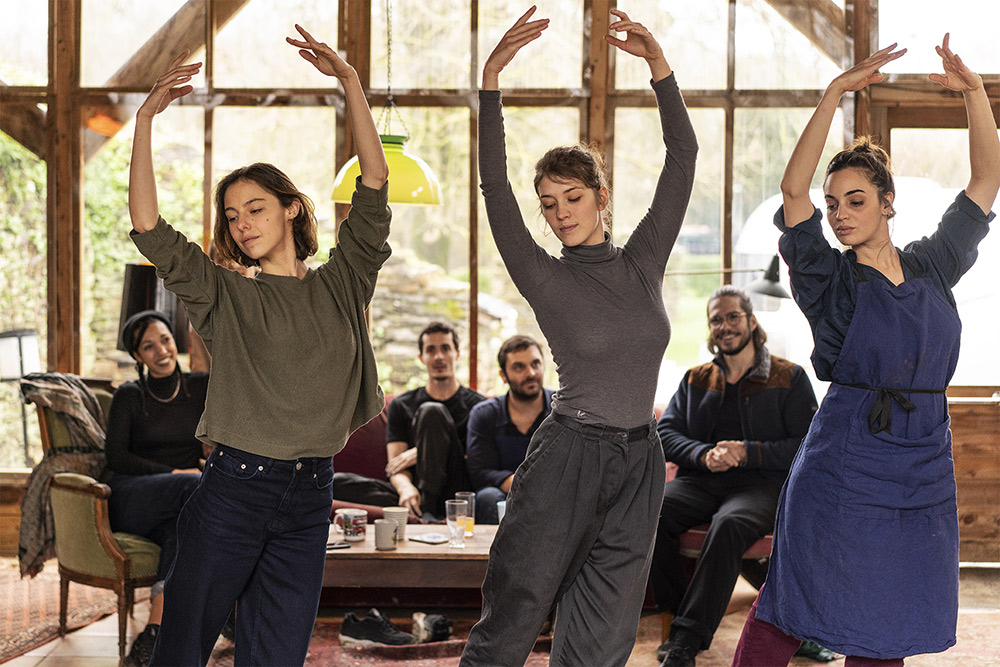!["Dancer in Paris" Director Cedric Klapisch wanted to film a drama about dancers that had never been depicted before [Director's Interview Vol.350]](https://cinemore.jp/images/da8536acaa1d4a5da69ec6301820e7ca362163365842b5bd0e0e7d1115346f66.jpg)
© Emmanuelle Jacobson-Roques
"Dancer in Paris" Director Cedric Klapisch wanted to film a drama about dancers that had never been depicted before [Director's Interview Vol.350]
I want to capture the energy of young actors on film.
Q: The original title of ``Dancer in Paris'' is ``En Corps.'' What are your thoughts behind the title?
Klapisch: It's a kind of play on words. In France, when a performance ends, the theater is filled with chants of "Encore!" Elise's life, which was once interrupted due to injury, continues once again. Therefore, I took advantage of the sound of the word encore (= once again) and layered it on the actual meaning of En Corps, ``body.''
Q: Dancer in Paris has aspects of it as a coming-of-age movie. Do you really like this route?
Klapisch: It seems like I really love drawing new generations. My recent TV series `` Greek Salad '' (distributed on Amazon Prime) is like a sequel to `` Spanish Apartment, '' and the main characters are today's young people. However, I am not particular about youth films as a genre. A big motivation for making films is the desire to film young actors who have just made their debut. In their 20s, they have energy, momentum, and passion for their work emanating from their bodies. I want to make a movie about the dazzling feeling of starting a lifelong career.

"Dancer in Paris" © 2022 / CE QUI ME MEUT MOTION PICTURE - STUDIOCANAL - FRANCE 2 CINEMA
Q: Do you have any plans to make another film about dance?
Klapisch: I have hope. Speaking of fiction, I'd like to try making a musical movie. You can easily incorporate dance elements into it. I have made dance documentaries, and have also filmed the dance stages themselves. When you use dance in fiction, you will discover something new. Now that I've realized that, I want to develop a new idea.
Q: What is the charm of dance that you realized after filming this movie?
Klapisch: Dance is a living art. The word live performance says it all. Just as musicians perform completely differently for concerts and studio recordings, dancers also perform differently for stage performances and for filming. I was convinced of that through this work. Through this shoot, we were able to capture the thoughts of dancers who were unable to perform due to the coronavirus pandemic.
Q: Finally, please tell us why you make movies.
Klapisch: French novelist Albert Camus said, ``As long as I live, I want to write something as an artist.'' I feel the same way. Japanese director Akira Kurosawa, whom I greatly respect, has created works in a variety of genres, including comedy, human drama, tragedy, and action, and has depicted diverse aspects of life. I guess that's the life of an artist. I feel like I also make movies to express my life.
Reserve “Dancer in Paris” now↓
Director/Screenplay: Cedric Klapisch
Born on September 4, 1961 in Neuilly-sur-Seine, near Paris. He studied film at the University of Paris III and then at the University of Paris VIII, earning a degree. After that, he studied film at New York University for two years. In 1984, he directed his first short film, ``Glamour toujours,'' and since then he has produced a series of short films. After returning to France, his short film ``Ce qui me meut'' in 1989 became a hot topic, and in 1992 he released his first full-length, ``Department Store Encyclopedia.'' In 1996, ``The Cat is Missing'' (1996) won the Film Critics Association Award at the Berlin International Film Festival and became a huge hit. Since then, he has released a series of works set in Paris such as ``Family Mood'' (1996), ``Probability of Paris'' (1999), and ``PARIS'' (2008), while also producing works such as ``Spanish Apartment'' (2002) and ``Spanish Apartment'' (2002). Works with themes of a period of youth, such as ``Russian Dolls'' (2005), have become his trademark. A long-time fan of ballet and dance, he has also filmed works such as ``Aurelie Dupont'' (2010) and other works set at the Paris Opera House, so the wide-ranging appeal of Klapisch's films cannot be overlooked. Also, he makes a cameo appearance somewhere in the work, and discovering it is part of the fun. Recent works include ``Paris in New York'' (13), ``Welcome Back to Burgundy'' (17), and ``Somewhere in Paris, With You'' (19).
Interview and text: Hiroaki Saito
Became freelance in 1997, contributing movie reviews and interview articles to various media such as movie magazines, theater pamphlets, and movie sites. The column is constantly updated on Yahoo! News.
"Dancer in Paris"
Releases nationwide from September 15th (Friday) at Human Trust Cinema Yurakucho, Bunkamura Le Cinema Shibuya Miyashita, Cine Libre Ikebukuro, etc.
Distribution: Albatross Film, Cetera International
© 2022 / CE QUI MEUT MOTION PICTURE - STUDIOCANAL - FRANCE 2 CINEMA

